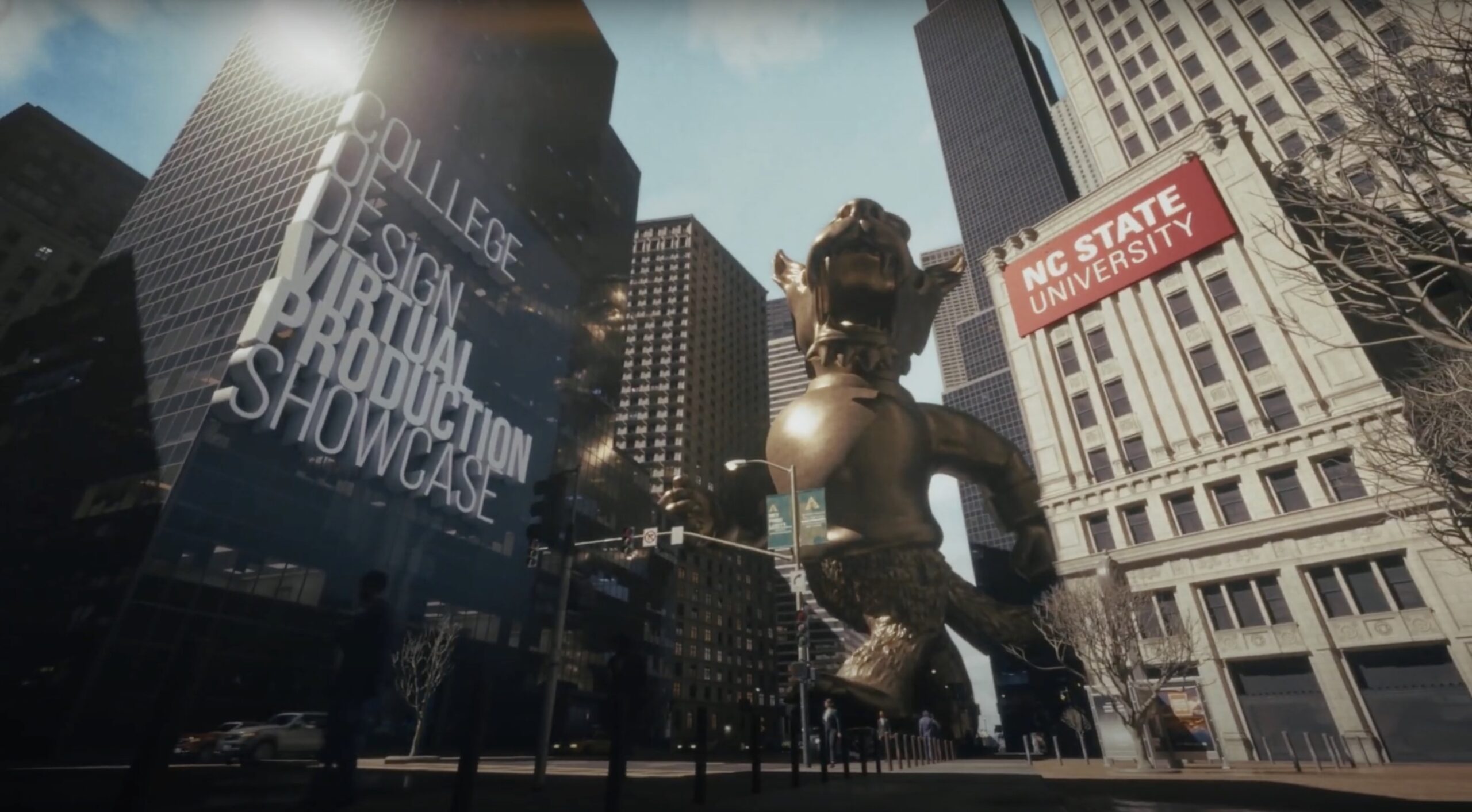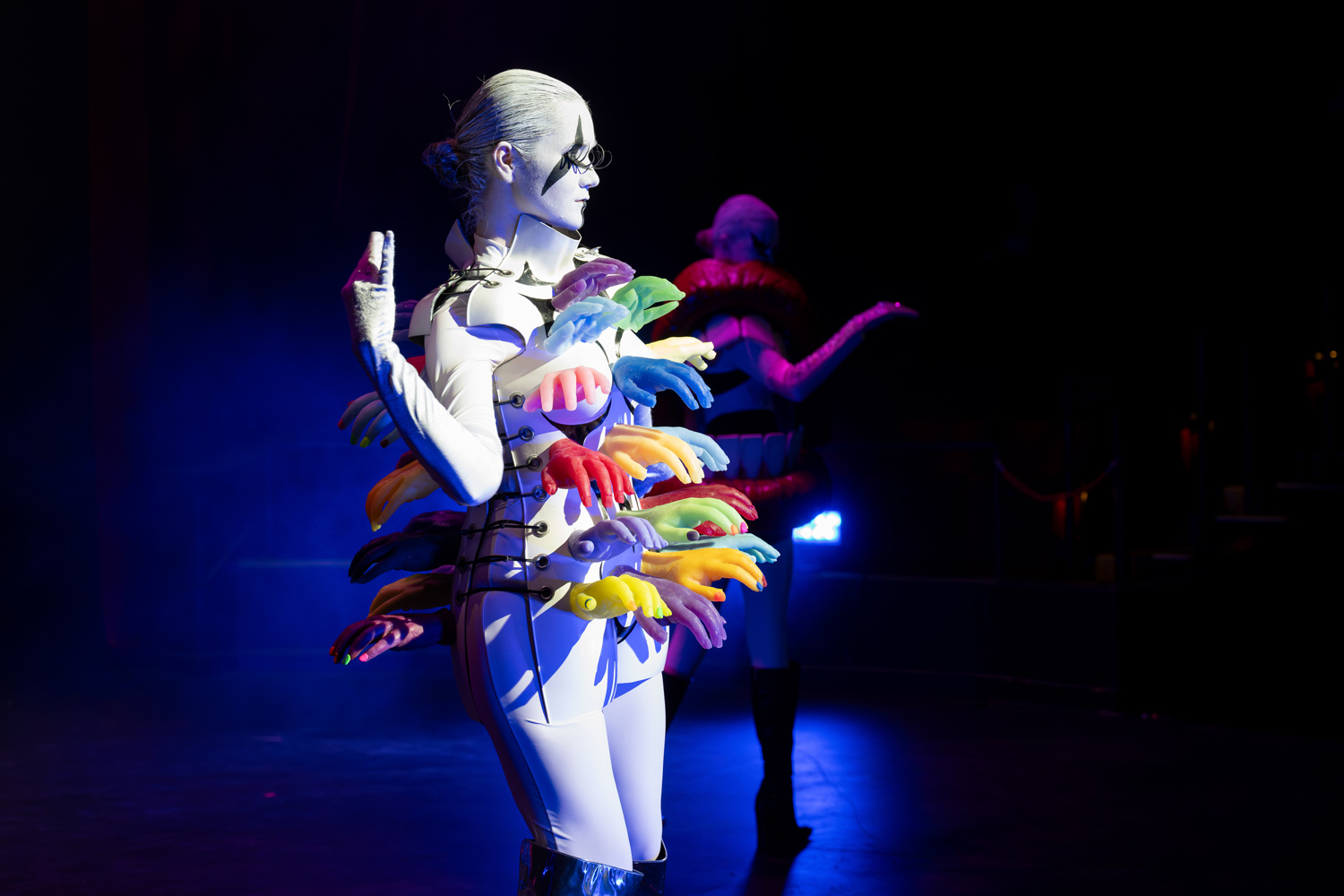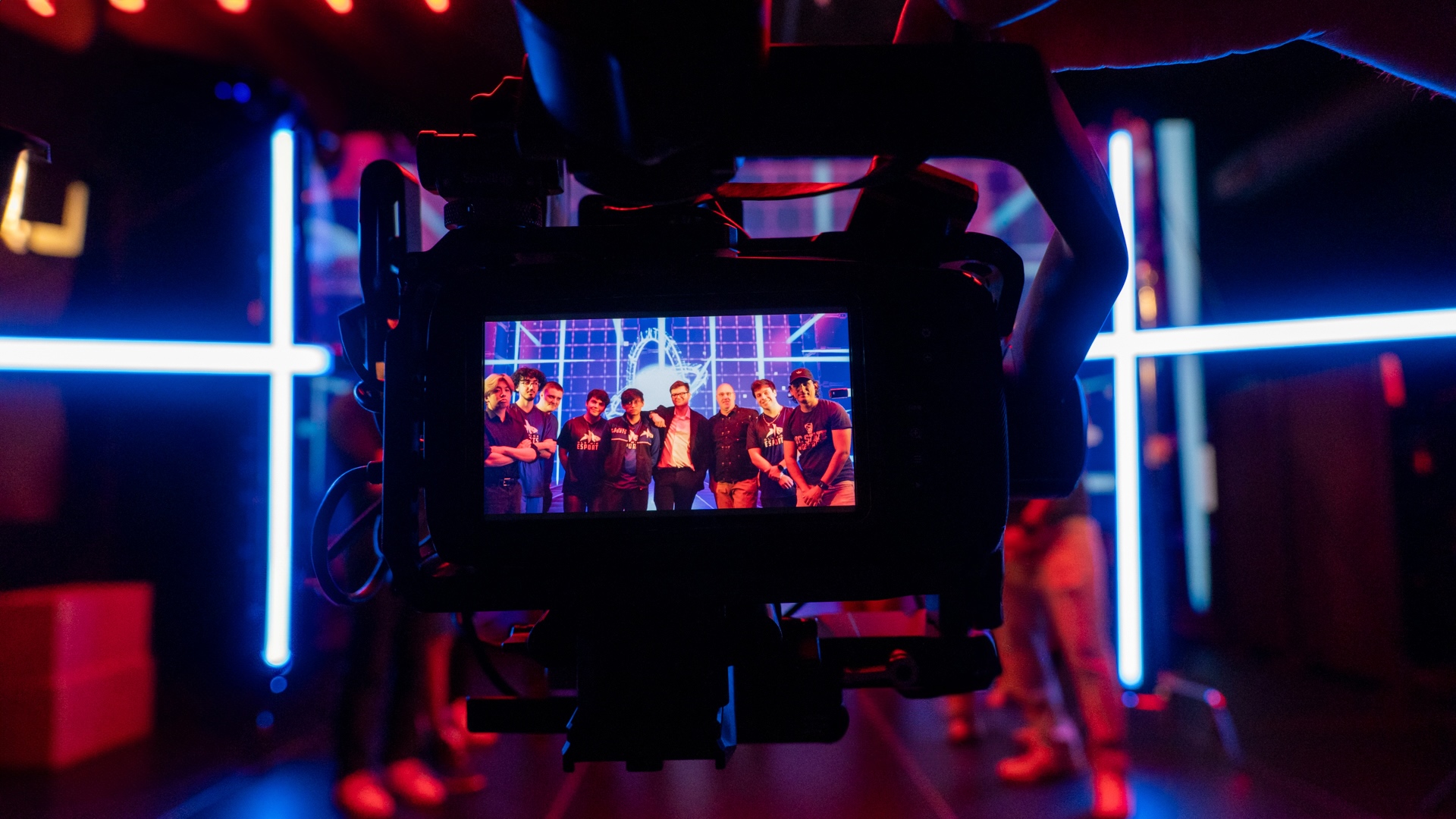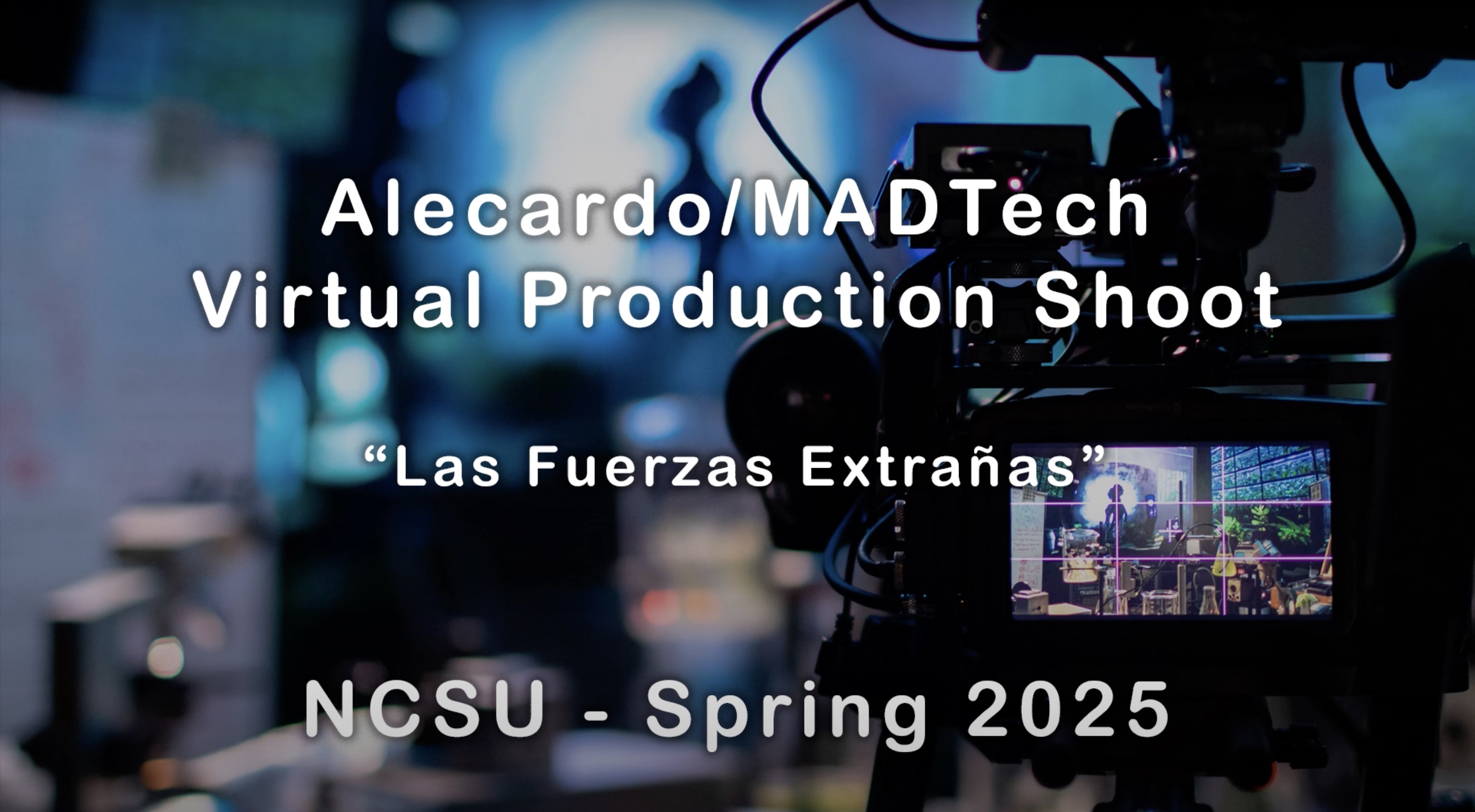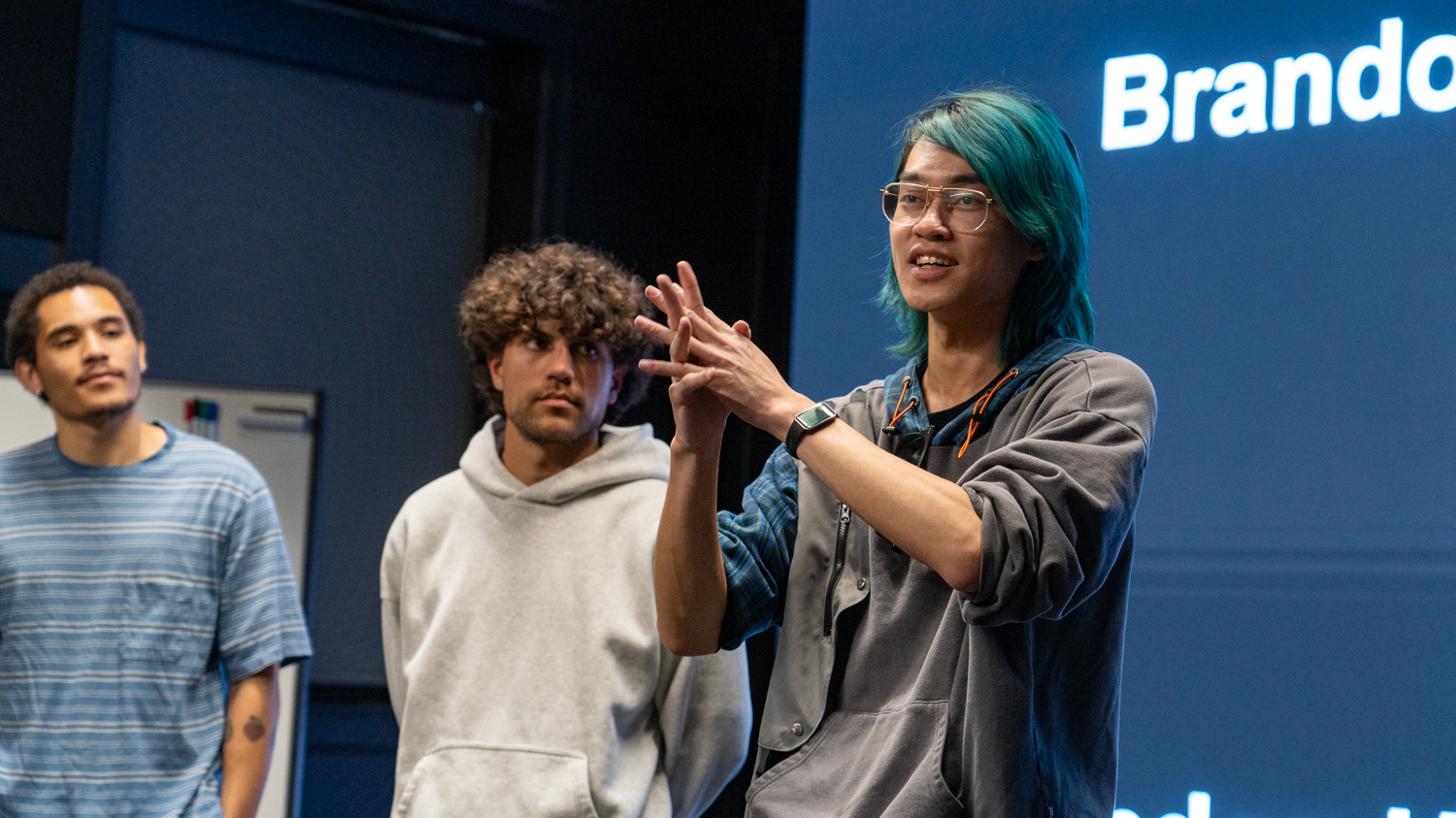Virtual Production Lab
A pioneering hub for extended reality projects and interdisciplinary collaboration on the East Coast.
Virtual Production at NC State University
In 2023, the College of Design (CoD) at North Carolina State University inaugurated one of the pioneering virtual production studios on the East Coast. Equipped with state-of-the-art technology and a team of seasoned professionals, our studio is poised to establish itself as a leading educational hub in virtual production and beyond. This is achieved through a project-based approach that empowers students and faculty to engage in hands-on learning experiences.
The studio’s open access policy extends to CoD faculty and students, as well as other academic departments and external organizations within NC State. Our team provides comprehensive technical support and creative guidance throughout the project lifecycle.
In addition to its operational capabilities, NC State will offer specialized educational programs designed to equip individuals with the necessary expertise to excel in the industry.
What is Virtual Production?
Virtual production is a rapidly evolving medium that integrates an LED volume, cameras, tracking devices, dynamic lighting equipment, live actors, scene props, and specialized software, such as a game engine. A typical workflow involves the software rendering a virtual environment onto the LED wall. Live actors and physical scene props are positioned in front of the LED wall. Dynamic lighting techniques are employed to illuminate the real stage by utilizing the virtual environment projected onto the background. Cameras strategically positioned on the stage seamlessly blend the actors, scene props, and background. Notably, cameras equipped with tracking devices enable the software to instantly calculate and update the background based on changes in the actors’ location or orientation. This creates the illusion that the actors are immersed within the virtual environment.
Why choose Virtual Production?
- In traditional filmmaking, green screen technology is employed to conceal portions of a stage, enabling the insertion of computer-generated backgrounds and effects during post-production. By eliminating this process, virtual production can significantly reduce the workload associated with this type of task. Furthermore, green screens can be utilized to capture reflections on any reflective objects or accessories present on set, which poses no challenges in virtual production. Strategically incorporating virtual environments onto reflective surfaces (such as sunglasses) can enhance the overall realism of a scene.
- Virtual production offers an immersive experience. An LED wall can be strategically positioned to encompass most of the stage, including the ceiling and floor, as exemplified in the series “The Mandalorian.” Performers perceive the environment in real-time, and the LED volume dynamically illuminates the stage based on the surroundings, enhancing the storytelling’s realism.
- Virtual production, a technology akin to virtual and augmented reality, has gained significant traction within the film industry. Recognizing its multifaceted potential, our laboratory actively collaborates on projects that ingeniously integrate virtual production with other technologies, thereby creating captivating visual and sensory experiences.
NC State Virtual Production Lab
Our lab, situated on the third floor of the NC State College of Design’s Brooks Hall, spans an area of 400 square feet. Equipped with soundproofing, it houses the requisite equipment and facilities to produce virtual production content.
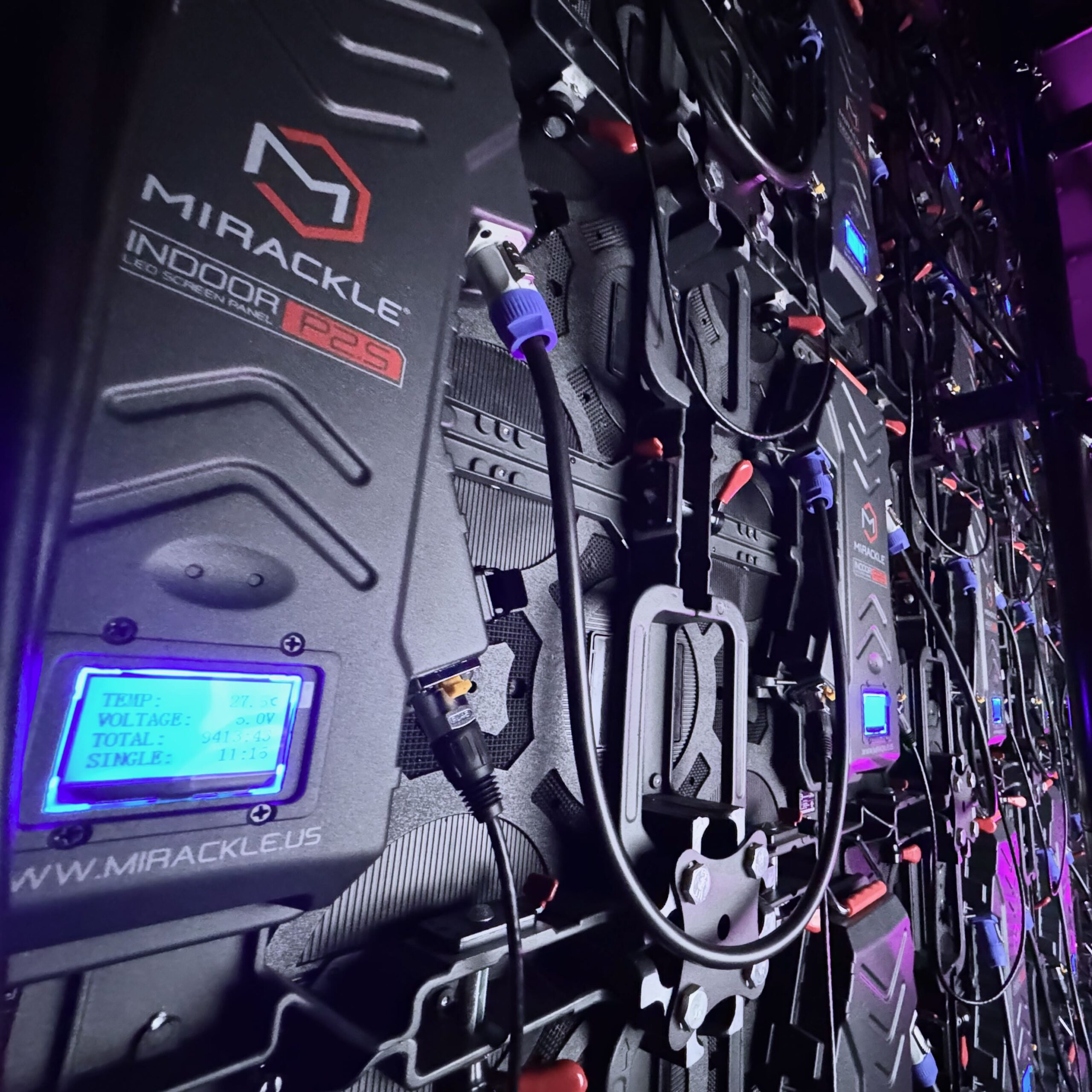
Modular LED Panel Wall
Our fully serviceable LED wall, measuring 22 feet (approximately 256 inches) by 12 feet (approximately 138 inches), boasts an impressive display of up to 4K resolution at a refresh rate of 3840hz.
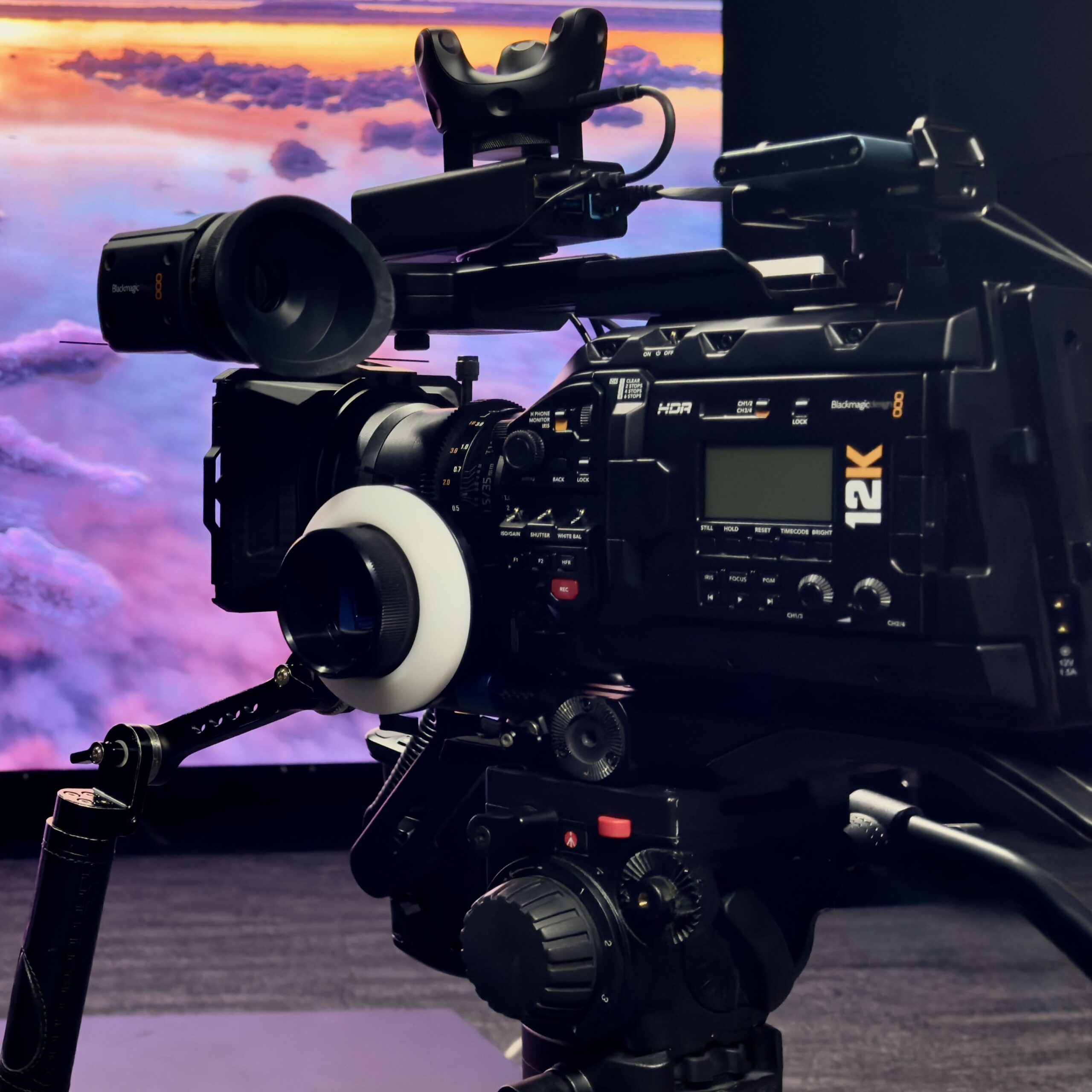
Digital Cinema Cameras
We have access to the most advanced digital cinema cameras capable of capturing any project at industry-standard 10-bit Apple ProRes files, 12-bit Blackmagic and 16-bit Redcode® RAW formats such as the Blackmagic Design URSA Mini Pro 12K, Pocket Cinema Camera and the RED Komodo 6K.

Image-Based Lighting
RGBW LED lighting fixtures, such as the Quasar Science Rainbow 2 fixture, enable real-time reflection of virtual backgrounds onto actors, props, and wardrobe. This facilitates seamless integration of the scene into the camera without the complexities of post-production compositing of digital and real-life performers.
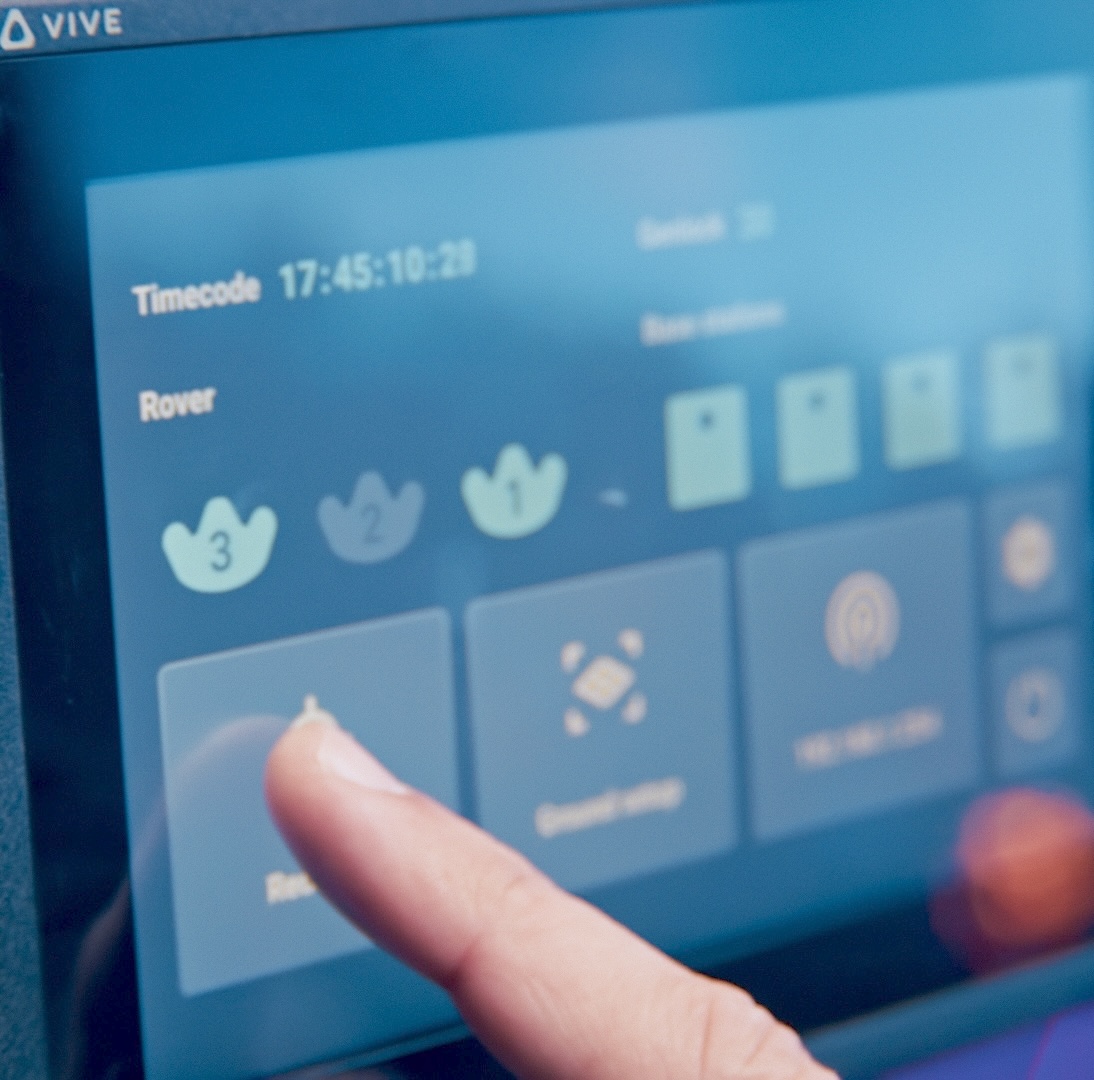
Advanced Tracking Tools
Utilizing the VIVE Mars CamTrack, which employs SteamVR™ Tracking 2.0 technology and VIVE Trackers, provides a straightforward yet precise camera tracking solution tailored for virtual production.
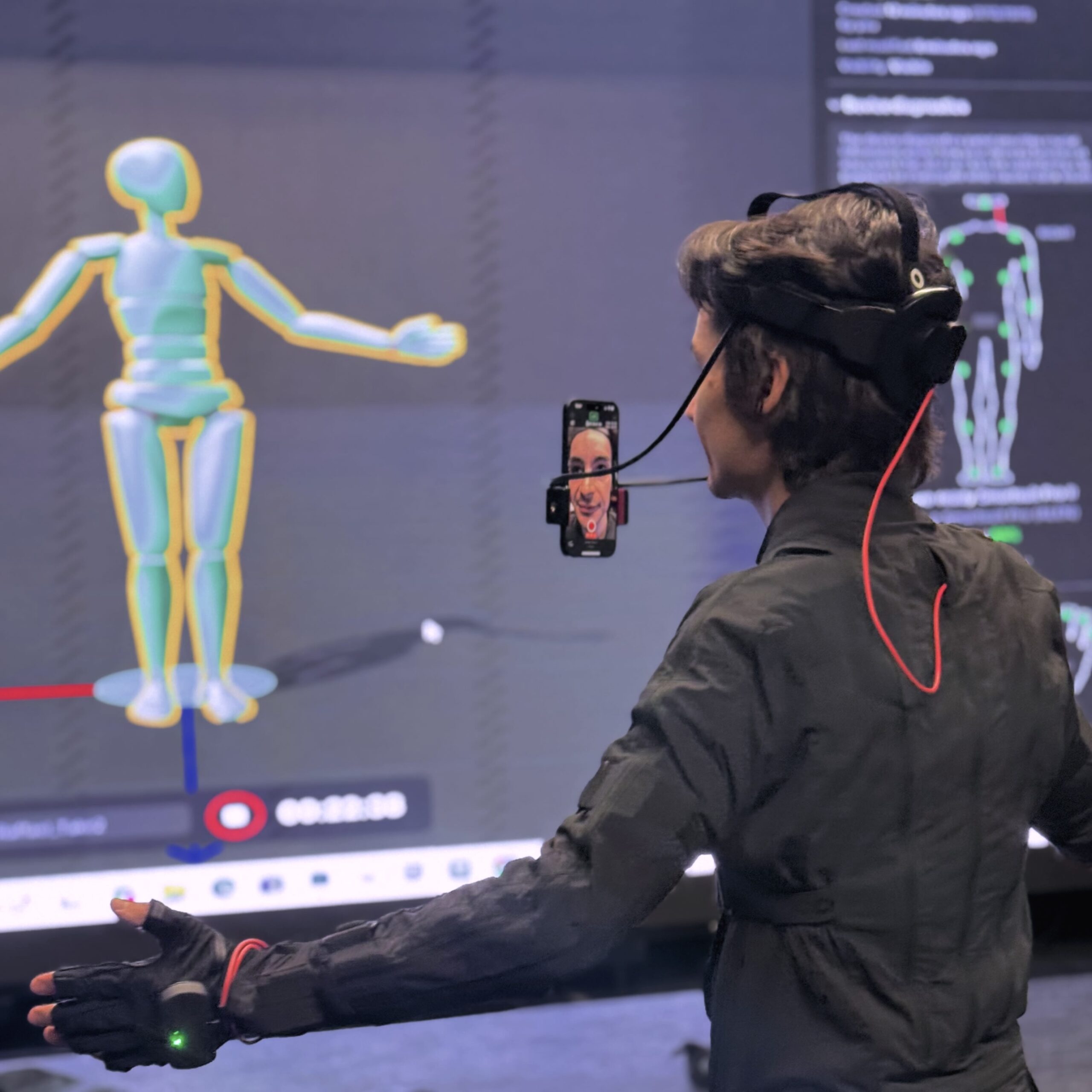
Performance Capture Hardware
We employ the industry standard inertial suits such as the Rokoko Smartsuit Pro and the Noitom Motion Capture Systems to capture raw mocap data and Unreal Engines Live Link Face for facial capture, enabling us to edit, refine, and render captivating performances at the highest possible resolution.
NC State Virtual Production News
Other Virtual Production Resources
FAQ
How can I use the Virtual Production Lab?
Kindly contact one of the team members listed below, and a representative will respond promptly.
Does my project have to be an Unreal Engine project?
In general, yes. In exceptional cases where camera tracking and 3D environment are not required, no.
How can I transfer my project files?
Please bring your project on a flash drive as a compressed (e.g., .zip or .rar) file. You can also share a cloud drive link to the compressed file.
Does the lab offer design and development services?
We specialize in research and education within extended reality and do not offer design and development services.
For more information, contact:
Lead Manager of Digital Fabrication, Emerging Technology, and Innovation
919-513-1259 lee_cherry@ncsu.edu
